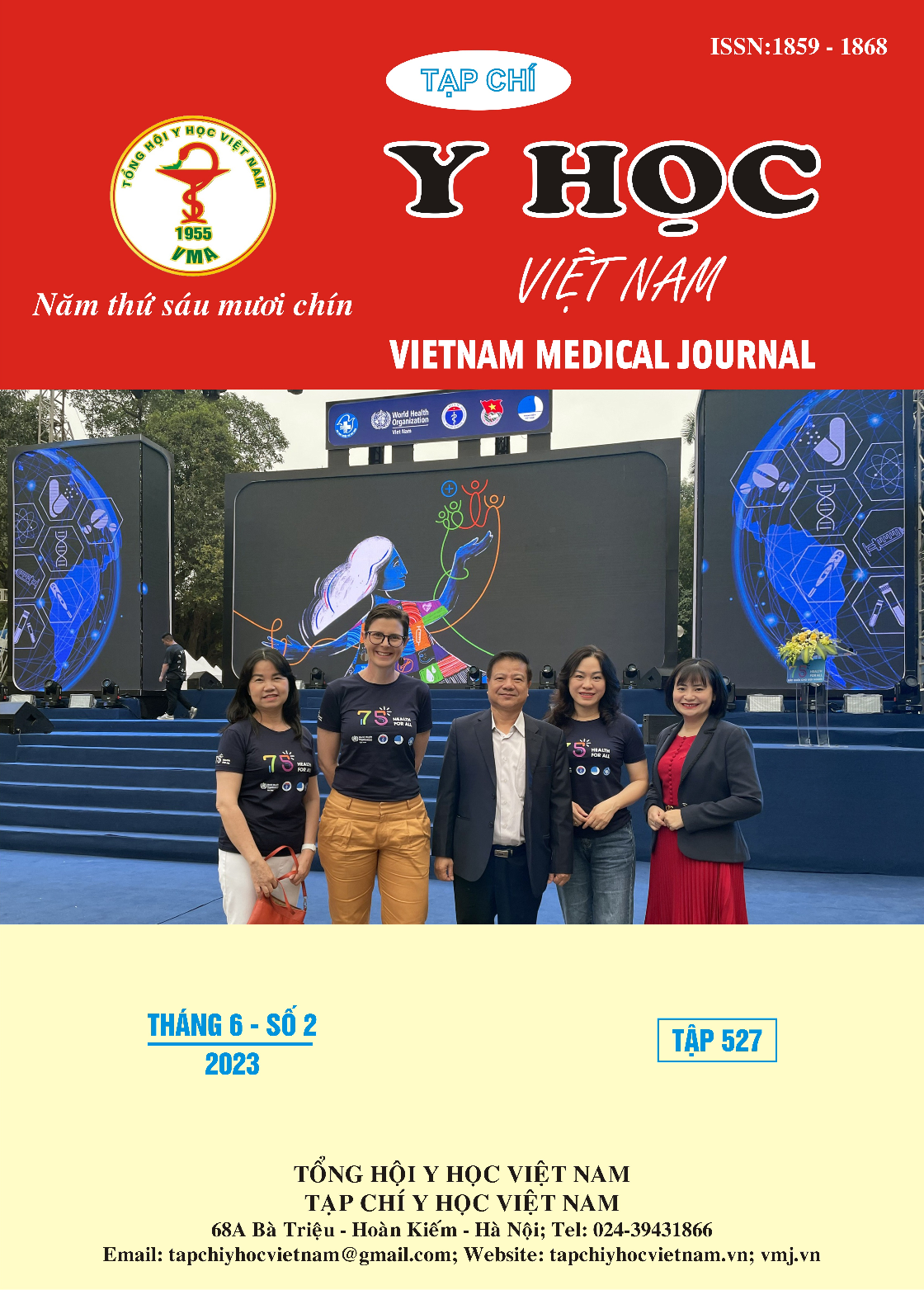ĐẶC ĐIỂM LÂM SÀNG VÀ CHỨC NĂNG THÔNG KHÍ CỦA BỆNH NHÂN SAU MẮC COVID-19
Nội dung chính của bài viết
Tóm tắt
Mục tiêu: Đặc điểm lâm sàng và chức năng thông khí của bệnh nhân sau mắc COVID-19 tại bệnh viện trường Đại học Y-Dược Thái Nguyên. Phương pháp: mô tả cắt ngang đặc điểm lâm sàng và kết quả thăm dò chức năng hô hấp của 49 đối tượng có hội chứng sau mắc COVID-19 đến khám tại bệnh viện trường đại học Y-Dược Thái Nguyên từ tháng 3 đến tháng 12 năm 2022. Kết quả: Bệnh nhân nữ là 55,1%, nam là 44,9%; rối loạn thông khí ở nữ là 26,5%, ở nam là 20,4%, ở bệnh nhân trên 35 tuổi là 28,6%, 15-35 tuổi là 18,4%. Hầu hết bệnh nhân có chỉ số BMI bình thường. Thời gian dương tính với COVID-19 dưới 1 tuần là 71,4%, từ 1 tuần trở lên là 28,6%. Thời gian đến khám sau mắc COVID-19 dưới 1 tháng là 20,4%, từ 1 tháng trở lên là 79,6%. Đa số bệnh nhân không có tiền sử bệnh hô hấp hoặc liên quan đến hô hấp (83,7%). Thời gian mắc COVID-19 sau tiêm vaccin mũi 3 là 180 ± 15 ngày. Bệnh nhân có dấu hiệu ho là 51%, đau ngực là 30,6%, khó thở hoặc hụt hơi là 44,9 %. Bệnh nhân có ho, đau ngực, khó thở hoặc hụt hơi có rối loạn thông khí lần lượt là 28,6%, 18,4% và 18,4%. Rối loạn thông khí kiểu tắc nghẽn nhẹ là 57,14%, hạn chế mức độ nhẹ là 14,3%, hạn chế mức độ vừa 2,04%. Chỉ số FEF 25-75% có mối tương quan nghịch với dấu hiệu hụt hơi (p<0,05). Kết luận: các bệnh nhân mắc COVID-19 cần được đánh giá chức năng thông khí, chỉ số FEF gợi ý phù hợp với các triệu chứng lâm sàng.
Chi tiết bài viết
Từ khóa
COVID-19, FEF, Thái Nguyên.
Tài liệu tham khảo
2. Nguyễn Ngọc Như Khuê và cs, 2022, Đặc điểm hậu COVID-19 tại ĐẮK LẮK, năm 2021. Tạp Chí Y học Việt Nam, 513(1).
3. Aminian A. et al, 2021, Association of obesity with postacute sequelae of COVID-19. Diabetes Obes Meta, 23(9), 2183-2188.
4. Iyer A.S. et al, 2020, Persistence and decay of human antibody responses to the receptor binding domain of SARS-CoV-2 spike protein in COVID-19 patients. Sci Immunol, 5(52).
5. Baden L.R. et al, 2021, Efficacy and safety of the mRNA-1273 SARS-CoV-2 vaccine. N Engl J Med, 384(5):403-416.
6. Ayoubkhani D. et al, 2022, Trajectory of long covid symptoms after COVID-19 vaccination: community based cohort study. BMJ, 377: e069676.
7. Pavli A. et al, 2021, Post-COVID Syndrome: Incidence, Clinical Spectrum, and Challenges for Primary Healthcare Professionals. Arch Med Res, 52(6):575-581.
8. Ye L. et al, 2022, The Investigation of Pulmonary Function Changes of COVID-19 Patients in Three Months. J Healthc Eng, doi: 10.1155/ 2022/ 9028835.


